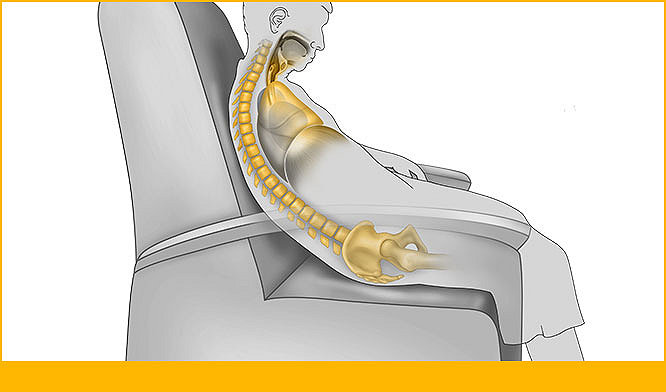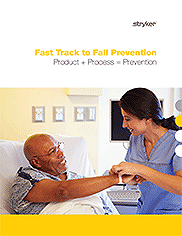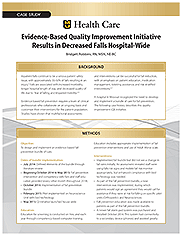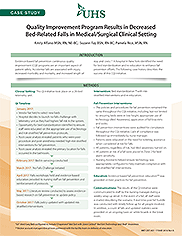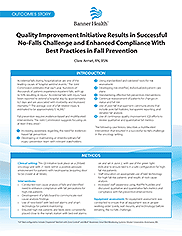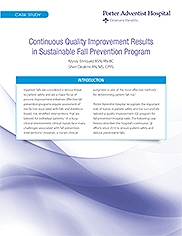Fall prevention
Hospitalized patients are at risk for numerous hospital-acquired conditions. Medications, treatments, and disease conditions can put patients at risk for falling as well. This section provides education on the evidence-based strategy for prevention of patient falls.
Fall reduction
Learning objectives
- Define the different types of falls
- Discuss injuries that may result from a fall
- Discuss financial implications of falls
- List risk factors
- Verbalize nursing interventions to minimize falls and fall-related injuries
- Describe how technology can assist in reduction of falls
Prevention is in: Reducing Falls and Saving Skin in the ED
Learning objectives
- Understand statistics implicating ED origin of pressure injuries (PI) in the acute care setting
- Recognize characteristics of pressure injuries, including staging definitions and descriptions
- Understand the human and financial costs of pressure injuries
- Identify interventions useful for preventing pressure injuries in the ED environment
- Distinguish between the different types of falls
- Understand the human and financial cost of a fall
- Identify ED-specific risk factors for falls
- Identify evidence-based fall prevention practices in the emergency department
Fast Track to Fall Prevention
The Stryker Fall Prevention Program combines technology, education, and partnership to help hospitals minimize the risk of falls. Our program provides a systematic means to educate clinical staff on the conditions that can lead to a fall incident, along with evidence-based processes and technologies designed to help reduce the risk of patient falls. The program provides methods to assess and address patient risk factors in an effort to minimize the risk of falls during hospitalization and after discharge.
Evidence-Based Quality Improvement Initiative Results in Decreased Falls Hospital-Wide
Author: Bridgett Robbins, RN, MSN, NE-BC
Inpatient falls continue to be a serious patient safety issue, with approximately 30-50% of falls resulting in an injury. Falls are associated with increased morbidity, longer hospital length of stay, and decreased quality of life due to fear of falling and impaired mobility.
A hospital in Missouri recognized the need to develop and implement a bundle of care for fall prevention. The following case history describes this quality improvement (QI) initiative.
Quality Improvement Program Results in Decreased Bed-Related Falls in Medical/Surgical Clinical Setting
Authors: Kristy Alfano MSN, RN, NE-BC, Suzann Fay BSN, RN-BC, and Pamela Rice MSN, RN
Evidence-based fall prevention continuous quality improvement (CQI) programs are an important aspect of patient safety. Accidental falls are associated with injury, increased morbidity and mortality, and increased length of stay and costs. A hospital in New York identified the need for bed standardization and re-education to enhance fall prevention efforts. The following case history describes the success of this CQI initiative.
Quality Improvement Initiative Results in Successful No-Falls Challenge and Enhanced Compliance with Best Practices in Fall Prevention
Authors: Clare Armet, RN, BSN
Fall prevention requires evidence-based and multifaceted interventions. The following case history describes a multifaceted intervention that resulted in a successful no-falls challenge in the oncology setting.
Comprehensive Quality Improvement Efforts for Unassisted Fall Reduction
Authors: Susan Clark, DNP, RN, CNML, CNL
Effective fall prevention requires a collaborative approach with ongoing evidence-based fall prevention interventions and communication. An interprofessional quality improvement (QI) initiative was implemented to reduce unassisted falls utilizing best practices in process improvement methodology.
Continuous Quality Improvement Results in Sustainable Fall Prevention Program
Authors: Kryssy Enriquez BSN, RN-BC & Sheri Deakins RN, MS, CPPS
Porter Adventist Hospital recognizes the important role of nurses in patient safety and has successfully tailored a quality improvement (QI) program for fall prevention hospital wide. The following case history describes the hospital’s continuous QI efforts since 2010 to ensure patient safety and reduce preventable falls.
28996


